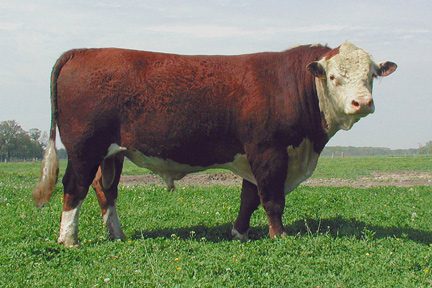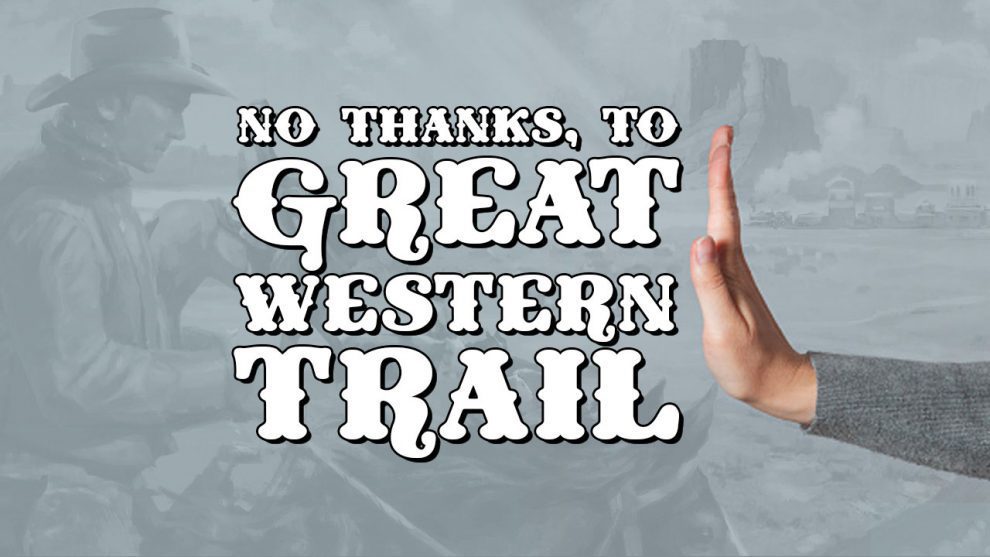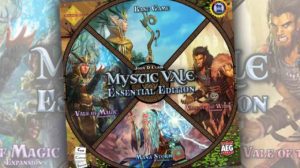A friend recently gave me Great Western Trail Second Edition for my birthday.
Now, I could talk at length about my friend’s generosity and the thoughtfulness of the present.
I could write paragraphs ruminating (pun absolutely intended) on the excellence of Great Western Trail Second Edition with its ungulate-ing paths and chattelled cattle.
I could discuss the differences between first and second editions or the possibilities for the upcoming sequels.
I could cover the inclusion of a more diverse roster of workers, the varied skin tones of the herder meeple with their adorable cowboy hats, and how, whilst the removal of Native Americans from the game is a positive step in light of their earlier discriminatory portrayal as little more than hazards to be dealt with or avoided, equivalent to floods, droughts and rock falls, their exorcism from Great Western Trail Second Edition entirely displaces a people who would have been present in the game’s landscape, both in the form of settlements encountered by the travelling herders and in the form of some of those same herders.
Hell, I could even applaud how it’s right and proper that the game presents Hereford cows as the best type of cow. Because they clearly are, irrespective of whether I’m from Herefordshire or not.
But I’m not going to do any of that.
Instead, I’m going to tell you why, despite its commendable stance on the relative value of the Hereford cow, I don’t want to play Great Western Trail Second Edition.
It comes down to one simple thing: the box insert.
This sounds ungrateful. After all, not all games come with an insert included, and few of those included inserts are as pretty as this one is when everything is in its right place, all neatly arranged and organised. See:

Hear that? That’s the contented sigh of a game well boxed.
The trouble is, it’s likely to stay that way unless I bin the insert, something I’m reluctant to do because it’s both a waste of plastic and so nice to look at.
Let’s have a closer look:

See that portion there along of the top of the photo, the spaces filled with carefully arranged tiles. See the bags in the bottom left? Care to take a guess where those tiles go during the game?
Bingo!
At the start of the game the number 1 tiles are all put into the number 1 bag and mixed up. I’ll let you extrapolate what happens with the number 2 and 3 tiles and bags. At the end of the game all those tiles are collected up and placed back into the insert.
This process – the getting out of tiles and putting back of tiles – takes ages. Longer if you want to reduce set up time for the next game by organising the tiles by number before you put them back in the box. Longer still if you knock a tile over in a part-filled insert space and have to spend a moment standing it back up again before slotting the remaining tiles in place. And even longer if your fingers struggle to hold the tiny stacks of tiles with just the right amount of correctly directional pressure to keep them together without the centre tiles popping out and scattering over the table like cardboard confetti.
It didn’t need to be like this. There’s absolutely no reason not to keep the tiles in their numbered cotton bags, except that the insert doesn’t fit properly if you do.
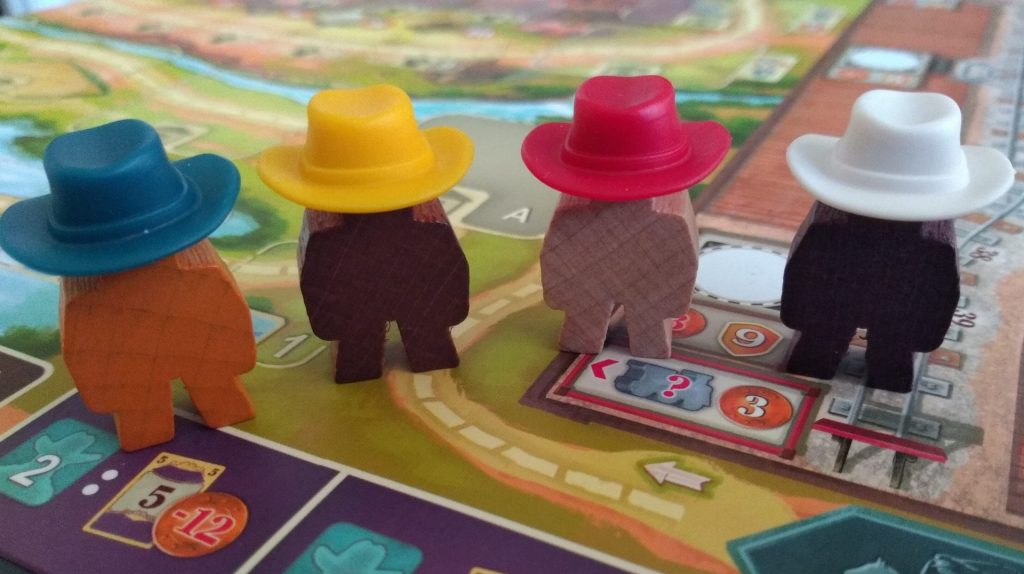
Far from being helpful, it makes setup and teardown take longer, by a few minutes each time. You could read this article twice in the time it takes me to put just those little numbered tiles away properly.
I’m used to (i) games with no inserts, (ii) games with half-arsed inserts that are little more than space dividers, and (iii) games with inserts that don’t work, failing to hold components in place if the box is tipped or jostled.
Here, though, is an insert that’s had time, care and money put into it, an insert that technically works – everything is held in place however the box is stored. Yet it’s a bigger hindrance than any of those three previous options. If I were an addict with a baggie habit I could halve the set up/tear down time by throwing the insert away and using plastic bags.

The insert puts me off playing Great Western Trail Second Edition. There are plenty of other great games that I’ve not played enough, why would I choose a game with an insert that hates me?
And all this is before you hear that the card holders in the insert aren’t deep enough to hold all the cards. And I’m no over-eager sleever with a fever either – my cards are nude and they still don’t all fit.
Why is this box insert so rubbish? How was it allowed to go into production?
I have a theory.
We’ve all seen board game boxes that are too big for the games inside. Splendor springs to mind – Tom Franklin’s 3D-printed box for Splendor is a quarter of the size of the original. It’s another game with a poor insert too, although in Splendor’s case the insert doesn’t actively sabotage the enjoyment, it just doesn’t work as a tool for holding components in place (terrible insert variant 3).
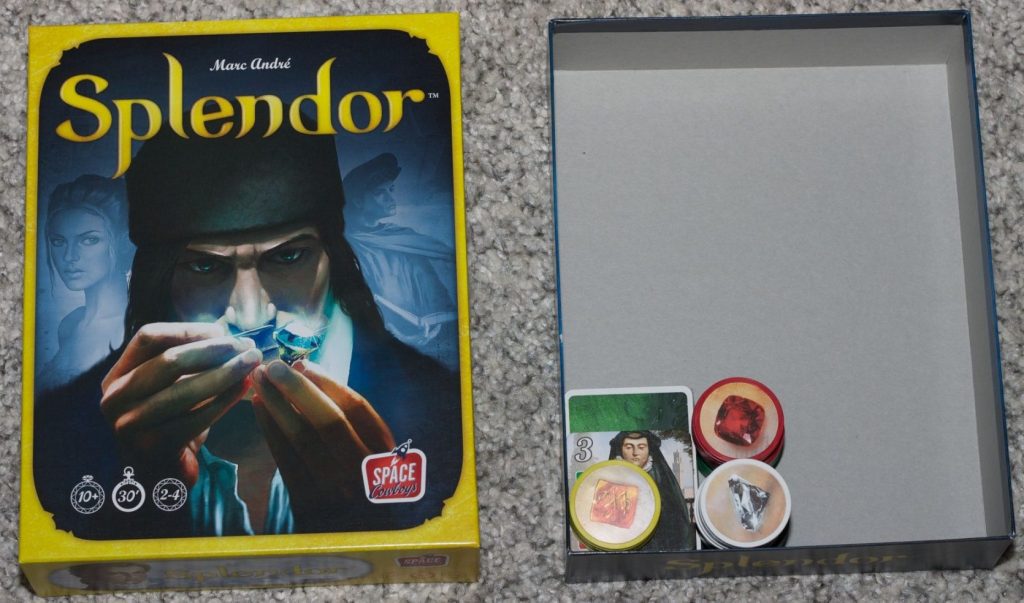
Why is the Splendor box so big? For advertising and money, of course. The publishers want to grab your attention as it sits on the shelf in your local game store, they want you to feel like their game is worth the price point.
So why is the Great Western Trail Second Edition box insert so impractical despite all appearances? For the same reason that the Splendor box is too big – a pretty portrait of precisely placed pieces in promotional pictures pleases the picky punter, persuading them to pay precious pounds to purchase this (im)perfectly packaged paragon of our prestigious pastime. Sales overcomes practical usage any day of the week.
Show me a game that looks as good in the box as it does out of it and my money is yours… unless the consequence of that in-box glamour is tired irritation from a terrible design.
Publishers take note: there are enough barriers to playing board games as it is, don’t add to them with your beautiful but shoddy insert just for the sake of promotional photos. And especially don’t do it when you’ll be trying to sell me an expansion and the Argentinian and New Zealand sequels over the next two years.
Of course, I could be wrong about the reason. Perhaps instead the insert was designed on a computer by someone who’s never had to go through the laborious process of setting the game up and putting it away. But surely that wouldn’t be the case, no one would be that stupid… would they?
Would they?
Still, at least they got the part about the Herefords correct.
